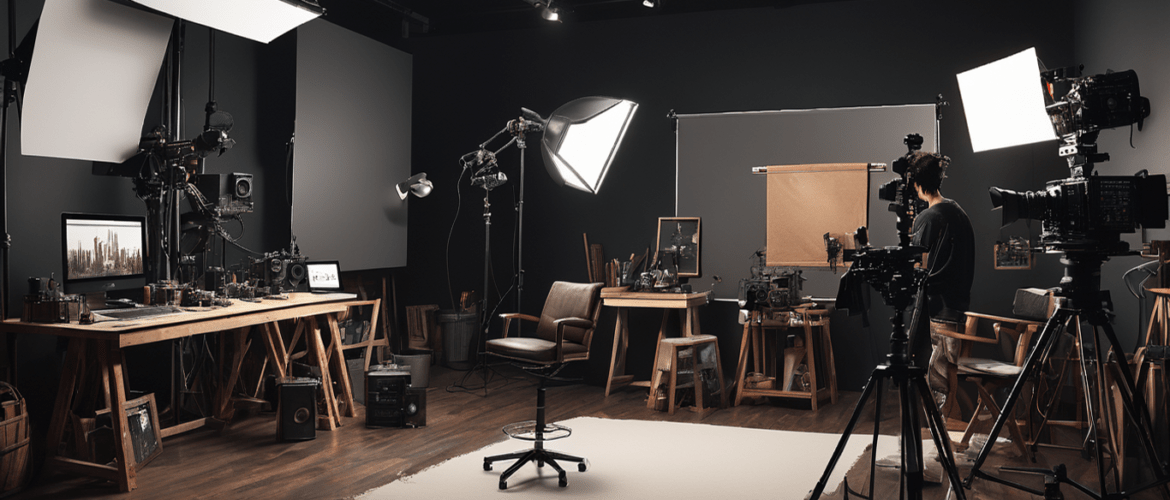Exploring Virtual Production Techniques in Filmmaking: Bringing Movie Magic to Life
In recent years, virtual production techniques have been revolutionizing the way films are made, bringing a new level of creativity and efficiency to the filmmaking process. But what exactly is virtual production, and how does it work? Let’s delve into this exciting technology and explore how it’s reshaping the world of filmmaking, explained in simple terms.
What is Virtual Production?
Virtual production refers to the use of digital tools and technologies to create and manipulate visual elements in real time during the filmmaking process. It combines live-action footage with computer-generated imagery (CGI) to seamlessly blend the real world with virtual environments. Virtual techniques enable filmmakers to visualize complex scenes, explore creative possibilities, and make real-time adjustments on set, streamlining the production process and enhancing the overall quality of the final product.
Key Virtual Production Techniques
Virtual Sets and Environments:
With visual production, filmmakers can create realistic digital sets and environments that serve as backdrops for live-action scenes. Using green screens or LED walls, actors perform against a blank background, while the desired environments are projected onto the screens in real time. This allows filmmakers to shoot scenes in exotic locations or fantastical settings without leaving the studio, saving time and resources.
Previsualization (Previs):
Previsualization involves creating rough animated sequences to visualize key scenes and camera movements before filming begins. Visual techniques enhance previsualization by allowing filmmakers to explore different camera angles, lighting setups, and visual effects in a virtual environment. This helps directors plan and refine their vision, ensuring a more efficient and cohesive production process.
Real-Time Rendering:
Real-time rendering technology enables filmmakers to see the final look of a scene in real time during filming. This means that directors and cinematographers can make instant adjustments to lighting, textures, and visual effects, ensuring that the desired aesthetic is achieved on set. Real-time rendering enhances collaboration between creative departments and reduces the need for extensive post-production work.
Motion Capture (MoCap):
Motion capture technology captures the movements of actors and translates them into digital animation. In visual production, motion capture is used to create realistic character animations and performances, adding depth and authenticity to CGI elements. Actors wear special suits with sensors that track their movements, allowing their performances to be seamlessly integrated into virtual environments.
Interactive Lighting:
Virtual techniques enable filmmakers to control lighting in real time to match the virtual environment and enhance the mood of a scene. LED walls with dynamic lighting capabilities can mimic natural lighting conditions, casting realistic shadows and reflections on actors and objects. This creates a more immersive and visually stunning cinematic experience.
Benefits of Virtual Production
Cost-Effective:
Virtual production techniques can reduce the need for expensive location shoots and elaborate set designs, resulting in cost savings for filmmakers.
Time-Efficient:
By streamlining the production process and enabling real-time adjustments on set, virtual techniques can shorten production schedules and accelerate project timelines.
Creative Flexibility:
Virtual production allows filmmakers to explore creative possibilities and experiment with different visual elements in a controlled environment, unleashing their imagination and pushing the boundaries of storytelling.
Collaborative Workflow:
Virtual production fosters collaboration between creative departments, allowing directors, cinematographers, and visual effects artists to work closely together to achieve the desired look and feel of a film.
Conclision:
To the closure, virtual production techniques are transforming the way films are made, offering filmmakers unprecedented creative freedom, efficiency, and flexibility. By harnessing the power of digital tools and technologies, filmmakers can bring their visions to life with greater precision and authenticity, creating immersive cinematic experiences that captivate audiences around the world. As visual production continues to evolve, it promises to push the boundaries of storytelling and redefine the future of filmmaking.


Leave A Comment